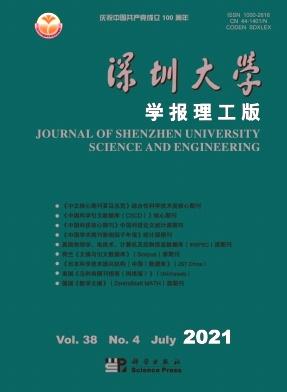三种蛋白质在消化系统不同癌组织中的表达谱
Q4 Engineering
Shenzhen Daxue Xuebao (Ligong Ban)/Journal of Shenzhen University Science and Engineering
Pub Date : 2022-05-01
DOI:10.3724/sp.j.1249.2022.03253
引用次数: 0
摘要
The microarray of digestive tract tumors (esophagus, stomach, colon, rectum, liver, and pancreas) and adjacent tissues was used to compare and analyze the differential expression of TAF1L, STOML1, and STOML2 proteins in cancer and adjacent tissues, as well as their association with carcinogenesis. The results showed that STOML2 was significantly overexpressed in six types of digestive system cancer tissues: esophagus, stomach, colon, rectum, liver, and pancreas (P<0.001), The expression of STOML1, a member of the same family, was significantly increased only in esophageal cancer and liver cancer (P<0.005). In addition, except for pancreatic cancer, TAF1L was also highly expressed in other five digestive system cancers (P<0.005). At the same time, TAF1L, STOML1 and STOML2 were co located with MMP9, a key protein for epithelial mesenchymal transformation STOML1 and STOML2 may have extensive cancer promoting effects in various cancer tissues. Due to the different expression levels of the three proteins in various cancer tissues, it indicates that they each have tissue specificity and have different functional missions. Further research is needed to investigate the molecular pathological potential of TAF1L, STOML1, and STOML2 proteins in the occurrence and development of digestive system malignant tumors. If they can be developed for precise diagnosis本文章由计算机程序翻译,如有差异,请以英文原文为准。
Expression profiles of three proteins in various cancerous tissues of digestive system
消化道肿瘤(食道、胃、结肠、直肠、肝脏和胰腺)及癌旁组织的微陈列芯片,通过多重免疫组织化学染 色,比对分析TAF1L、STOML1和STOML2这3种蛋白质在癌与癌旁组织的差异表达及与癌变的关联.结果 发现,STOML2在食道、胃、结肠、直肠、肝脏和胰腺这 6种消化系统癌组织中均呈显著性高表达 (P < 0.001),而同一家族成员STOML1则仅在食管癌和肝癌组织中表达明显增高 (P < 0.005).另外,除胰腺癌灶 外,TAF1L在其余5种消化系统癌组织中也呈现高表达 (P < 0.005).同时,TAF1L、STOML1和STOML2这 3种蛋白质均与上皮间充质转化的关键蛋白质MMP9有共定位现象.由此表明,3种蛋白质 TAF1L、 STOML1和STOML2在多种癌组织中可能具有广泛的促癌作用.由于3种蛋白质在多种癌组织的表达水平不 同,说明它们各自存在着组织特异性,且具有不同的功能使命,需进一步研究TAF1L、STOML1和STOML2 这3种蛋白质在消化系统恶性肿瘤发生发展过程中各自的分子病理学潜能,如能将它们打造成用于精准诊
求助全文
通过发布文献求助,成功后即可免费获取论文全文。
去求助
来源期刊

Shenzhen Daxue Xuebao (Ligong Ban)/Journal of Shenzhen University Science and Engineering
Engineering-Engineering (miscellaneous)
CiteScore
0.90
自引率
0.00%
发文量
14
 求助内容:
求助内容: 应助结果提醒方式:
应助结果提醒方式:


